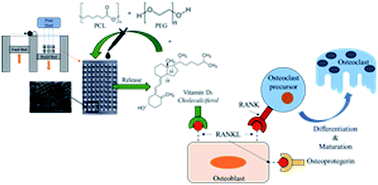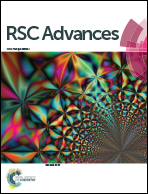Effects of vitamin D3 release from 3D printed calcium phosphate scaffolds on osteoblast and osteoclast cell proliferation for bone tissue engineering
Abstract
Vitamin D3 is a hydrophobic micronutrient and is known for inhibiting osteoclastic bone resorption in vivo via suppression of the Receptor Activator of Nuclear factor-Kappa B (RANK ligand) expression in osteoblasts. Although vitamin D is well-known for its promotion in bone health, little is known on its effects directly on bone cells. The objective of this study was to understand the effects of vitamin D3 release from 3D printed calcium phosphate scaffolds towards bone cell proliferation. In this study, cholecalciferol, a common intake form of vitamin D3, was successfully able to release from the scaffold matrix via the use of polyethylene glycol. Results showed a decrease in osteoclast resorption pits and healthier osteoblast cellular morphology compared to the control. Additively manufactured tricalcium phosphate scaffolds with designed porosity were loaded with vitamin D3 and showed controlled release profiles in phosphate buffer and acetate buffer solutions. The release kinetics of vitamin D3 from calcium phosphate scaffolds enabling osteoblast proliferation and inhibiting osteoclastic resorption can enhance healing for low load bearing applications for bone defects or permeate voids left by tumor resection.



 Please wait while we load your content...
Please wait while we load your content...